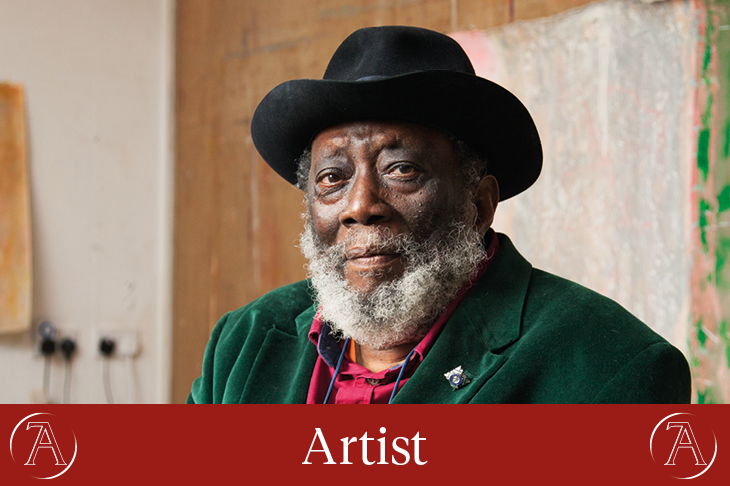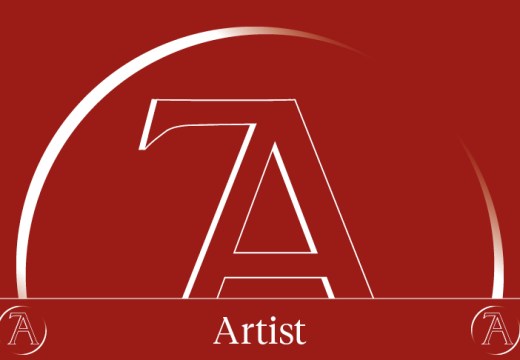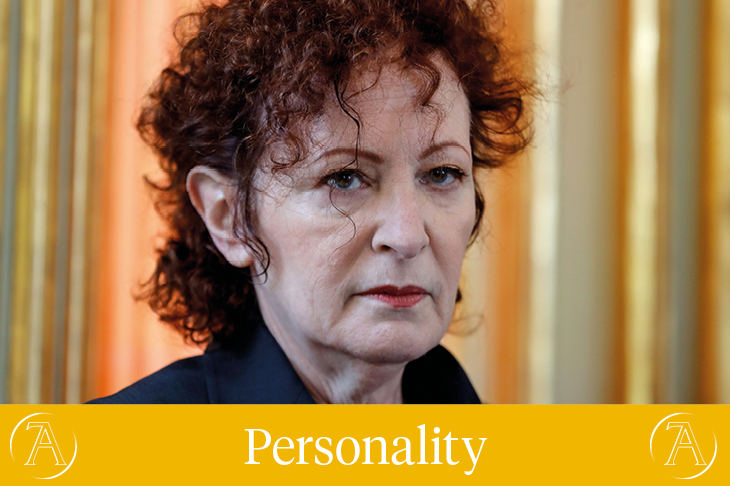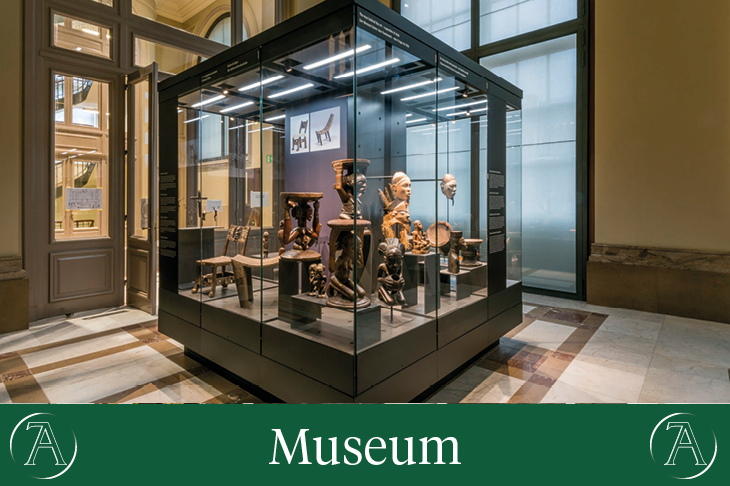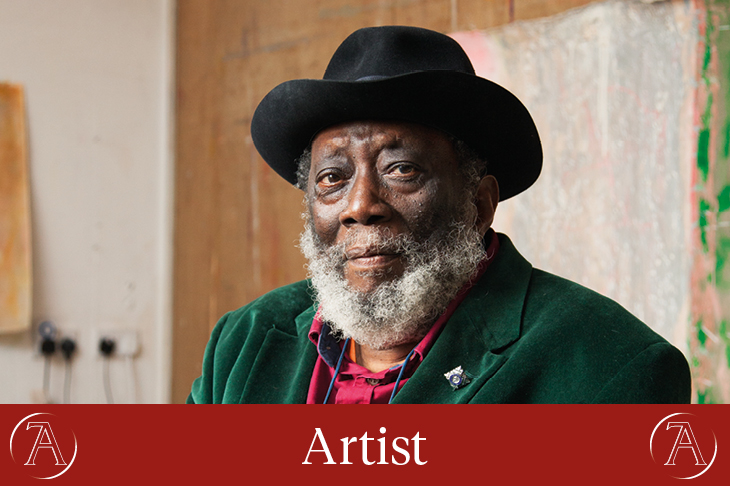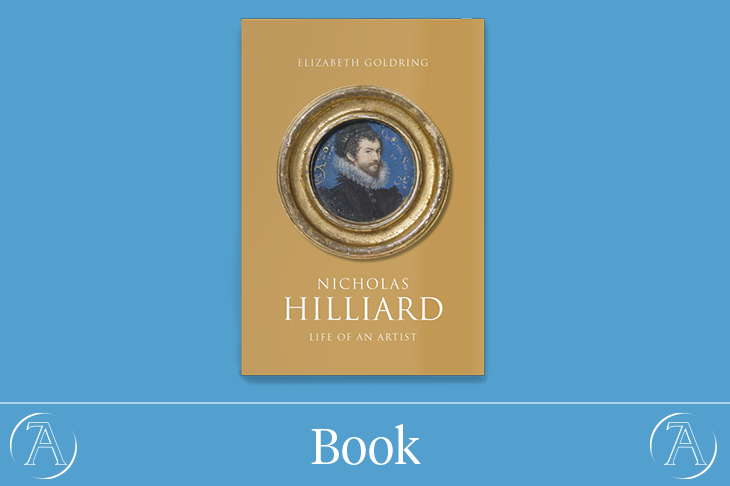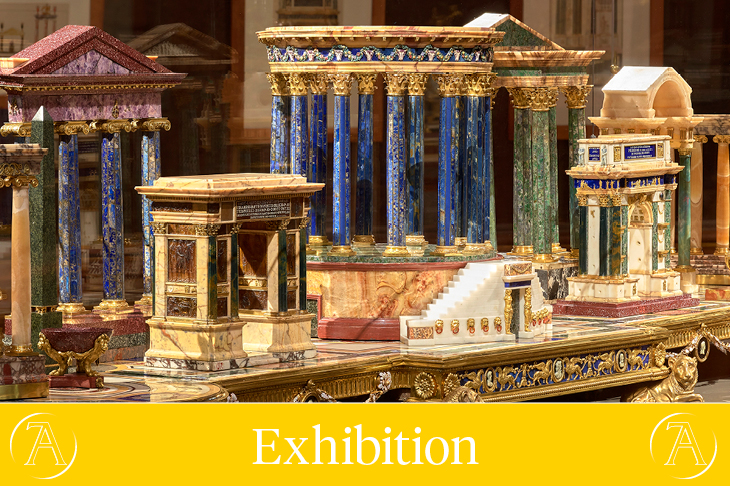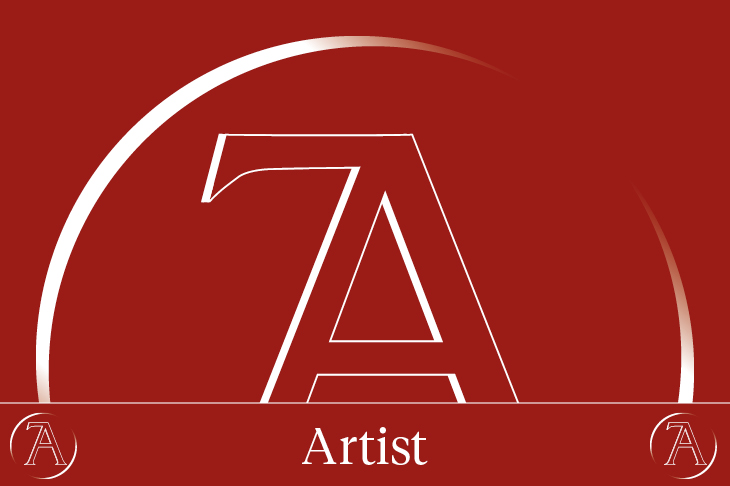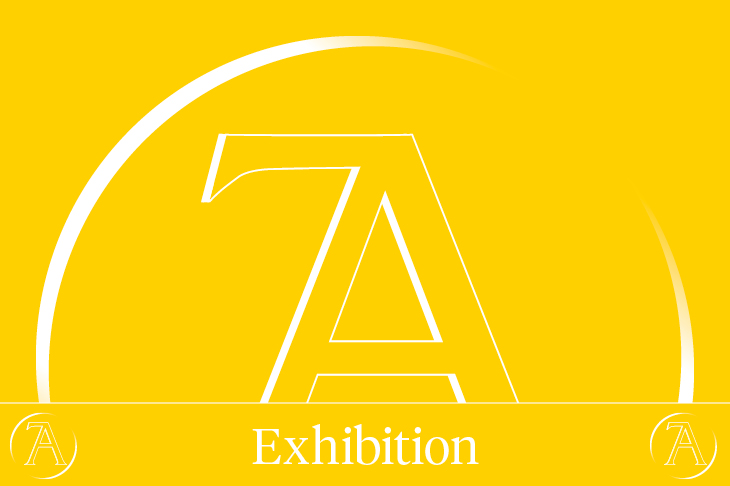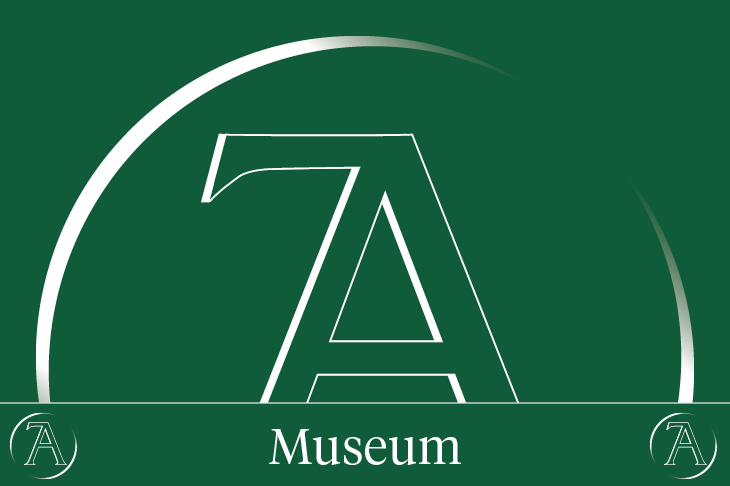Frank Bowling
When Frank Bowling arrived at the Royal College of Art in 1959, six years after moving to London from what was then British Guiana, he joined a cohort of students destined for great things: Allen Jones, R.B. Kitaj and David Hockney, among others. On graduating in 1962 he was awarded the silver medal for painting – Hockney got gold. This early accolade did not mean that public acclaim would materialise easily for Bowling – although he never once stopped working, driven perhaps by his faith that, as he told Imelda Barnard when interviewed in Apollo in 2017, ‘the possibilities of paint are never-ending’. His fans and supporters were similarly dedicated but for decades Bowling failed to reach the same level of recognition as his erstwhile peers. It was difficult to dismiss the sense that the curator Bryan Robertson had hit the nail on the head when, in 1964, he told Bowling: ‘England is not ready for a gifted artist of colour.’
Today it appears the world is ready to appreciate Frank Bowling’s gifts. Over the past few years his CV has swelled. His first major institutional show, ‘Mappa Mundi’, curated by Okwui Enwezor, opened at the Haus der Kunst in Munich in 2017 before touring to Dublin and Sharjah. The same year two of his ‘map paintings’ from the 1960s and ’70s – vast canvases in which planes of searing colour are overlaid with the stencilled outlines of countries and continents and other silkscreened images – made a memorable appearance in ‘Soul of a Nation: Art in the Age of Black Power’, which began its international tour at Tate Modern. And this year he had his first retrospective in the United Kingdom at Tate Britain – in the same rooms where Hockney had his two years earlier. For the first time, it was all there, in one place: the earliest, Baconesque canvases; the maps; the atmospheric colour fields and waterfall-like ‘poured’ paintings of the ’70s; the encrusted, quasi-sculptural grids and panels of the ’80s and ’90s; his recent works, melting pots of the different techniques and styles he has mastered over the decades. Many visitors described the exhibition as a revelation.
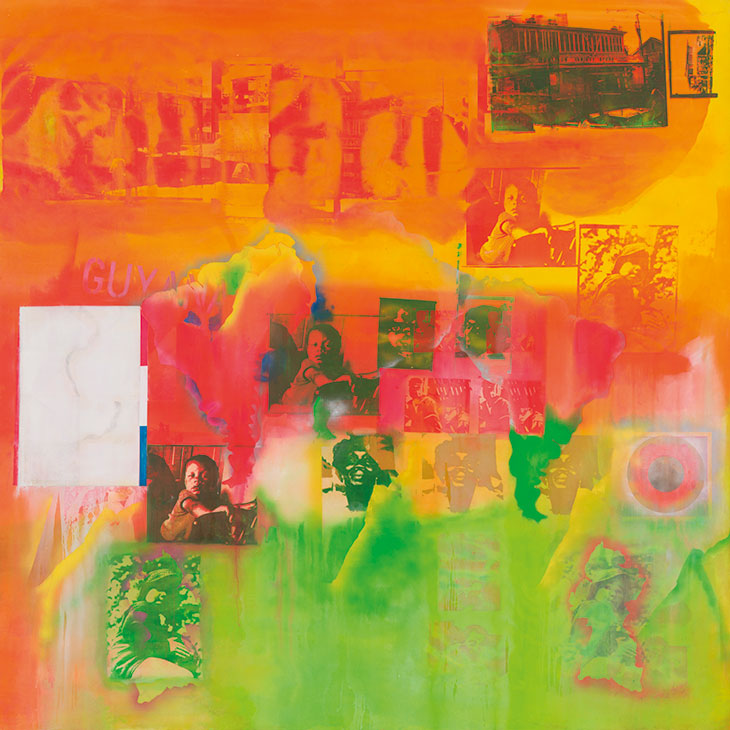
Middle Passage (1970), Frank Bowling. Menil Collection, Houston © Frank Bowling. All Rights Reserved, DACS 2019
I meet Bowling in November in the flat he shares with his wife Rachel Scott, a textile artist, a stone’s throw away from Millbank and the Tate. I want to know what the experience of the last couple of years has been like – all this attention, all of a sudden. ‘Really I just want to paint,’ Bowling says right away. ‘If I had made a painting every day from the day I was born, from 5am on 26 February 1934, how many paintings would that be?’ He is, nonetheless, very happy to talk – about memories of his early years in London, his family, about his artist friends and the past masters he admires (Turner, Constable and Rembrandt – The Jewish Bride in particular), and about the nature of art, language and humanity. Interspersed in the conversation are ruminations on what he’s trying to do with his own paintings, which, he ventures, are essentially ‘about colour and light’. But he emphasises that language is a slippery, unstable thing: ‘What you hear could easily be the opposite of what I’m trying to say. Everything is alive – art is like that. Its spirit is in the work itself.’
This desire to let the work stand on its own – unburdened by narratives, internal or external – is what led Bowling, when he first left London for New York in the late 1960s, and encouraged by his friend the art critic Clement Greenberg, to remove all figurative elements from his paintings and dedicate himself to abstraction. This was a bold declaration at a time of great debate about the political duty of black artists to represent their experience and culture in their work: Bowling, who was active in the Civil Rights Movement and as a champion of other black artists in his criticism and curatorial work, resented the implication that his art should be defined by his racial identity. His initial instinct was to rid his canvases not just of representational forms that could be read biographically or politically, such as the maps, but also of the hand of the artist altogether, devising a tilting board on which to lay his canvas, down which the paints could run and mix together as if assuming a life of their own – his ‘poured’ paintings.
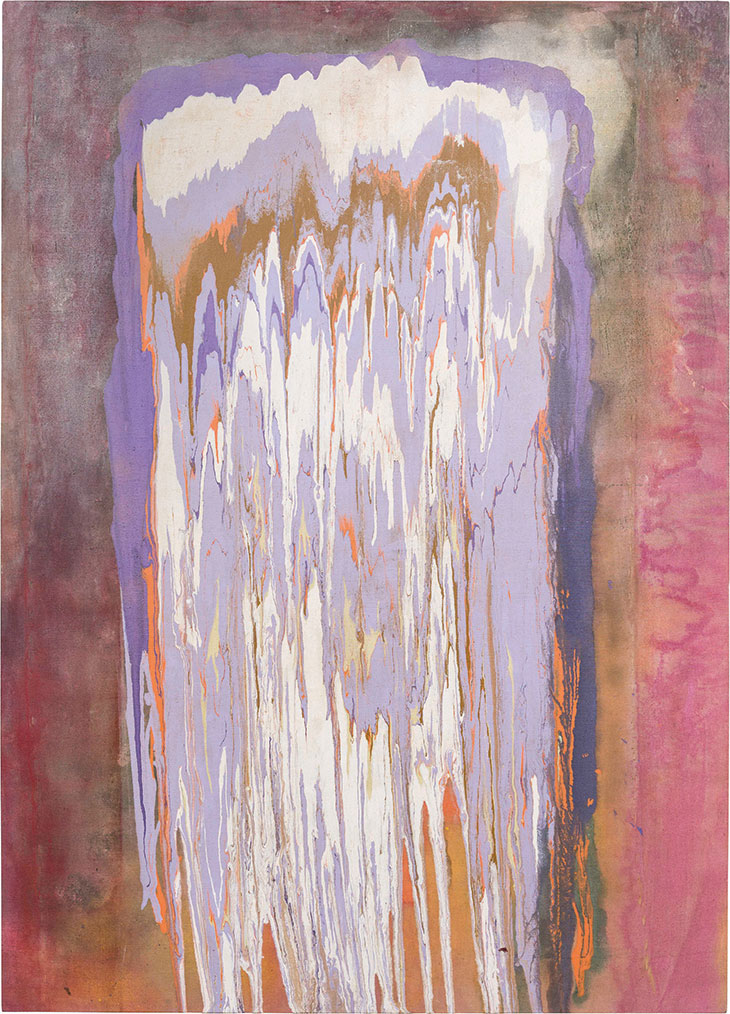
Ziff (1974), Frank Bowling. © Frank Bowling. All Rights Reserved, DACS 2019; courtesy Jessica McCormack
This period of what Greenberg had termed ‘post-painterly abstraction’ didn’t last, of course. As Bowling comments: ‘We are inflicted, and I choose this word carefully, by curiosity.’ Soon, he was back to his paintbrushes and spray cans, and then he was adding other materials to his canvases: bits of foam and newspaper and whichever shiny object caught his eye (on one occasion, Scott’s car keys). A few years ago, he rediscovered the silkscreens and stencils of his 1960s work and decided to make use of them, resulting in paintings such as the incandescent Pouring over 2 Morrison Boys and 2 Maps II of 2016 – the ‘Morrison boys’ are photographs of the sons of the author Toni Morrison.
Elena Crippa, who curated the exhibition at Tate Britain, tells me: ‘More than anything, through our conversations and seeing him at work, I have been touched by Frank’s extraordinary life quest to be free – free from a strict upbringing, free from the violent dehumanisation of racism, free from the limitations of language, free from judicious and established ways of mixing and layering materials […] to exist and be experienced beyond narrow interpretations and received categories.’ His canvases, with their layers of colour and material, their allusive forms, their marvellously evocative titles (Odysseus’s Footfalls, Sacha Jason Guyana Dreams, Who’s Afraid of Barney Newman?), are far from empty of meaning or narrative, but it’s an open-ended kind of narrative, an unbounded perambulation through myth and history and the artist’s own transatlantic life.
Now, aged 85, Bowling continues to work, going to his studio as often as he is able, which is not as often as he would like. He has embraced a more collaborative way of working, with family members and friends, to carry out the more strenuous application (or ‘throwing’) of paint. He recently completed a painting titled Wilting Sunflowers, inspired by the Tate’s ‘Van Gogh and Britain’ exhibition, on view at the same time as his. He has also begun a new series of grey paintings – because ‘people kept talking to me about the colour in my work, because I want to make clear that my paintings are not just influenced by what I might have seen on 26 February 1934 at 5am, when the light was coming up on the Essequibo River.’ Once again, Frank Bowling’s quest for creative self-determination seems to have yielded new gifts, new directions.
Gabrielle Schwarz is web editor of Apollo.
The Winners | Personality of the Year | Artist of the Year | Museum Opening of the Year | Exhibition of the Year | Book of the Year | Digital Innovation of the Year | Acquisition of the Year | View the shortlists
Unlimited access from just $16 every 3 months
Subscribe to get unlimited and exclusive access to the top art stories, interviews and exhibition reviews.

